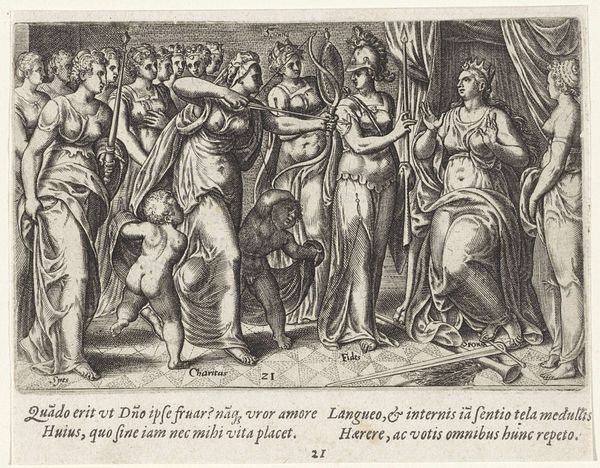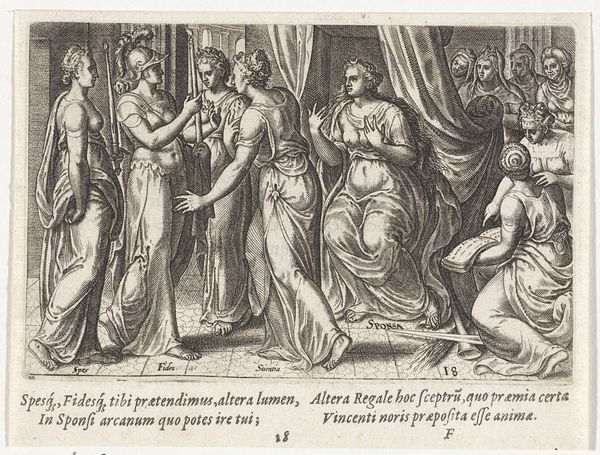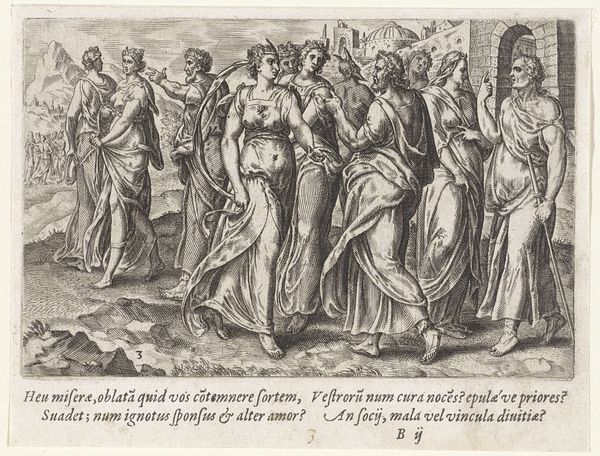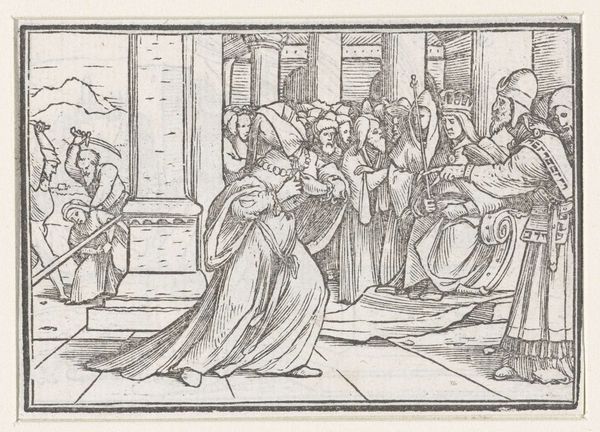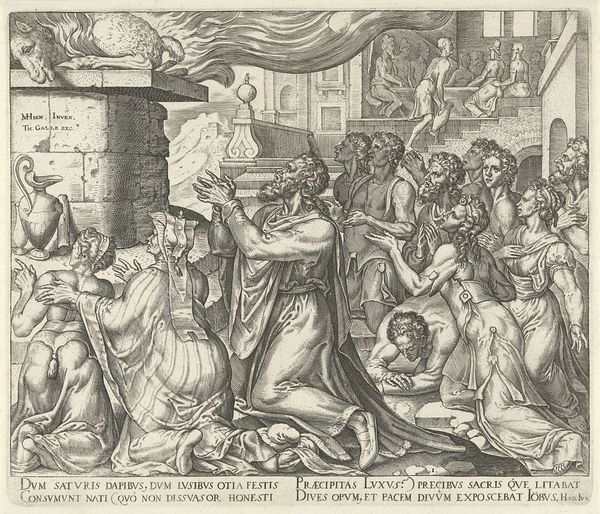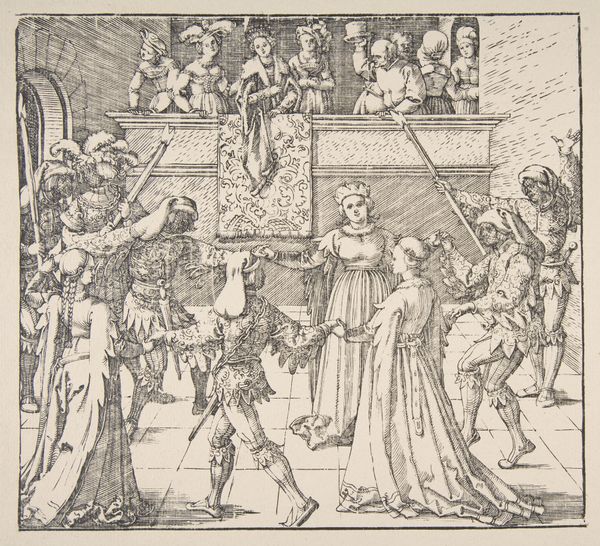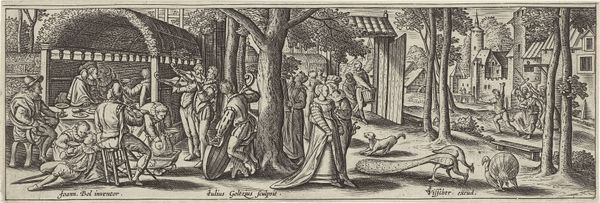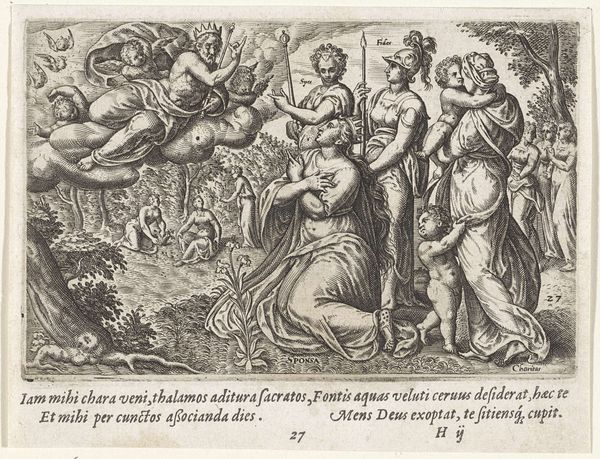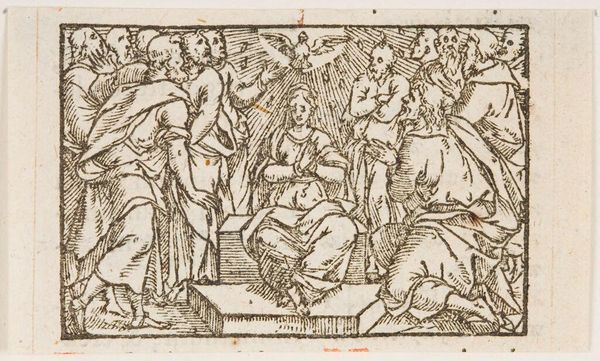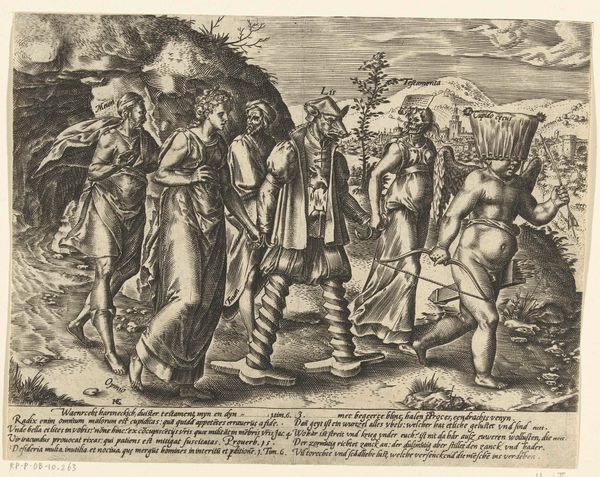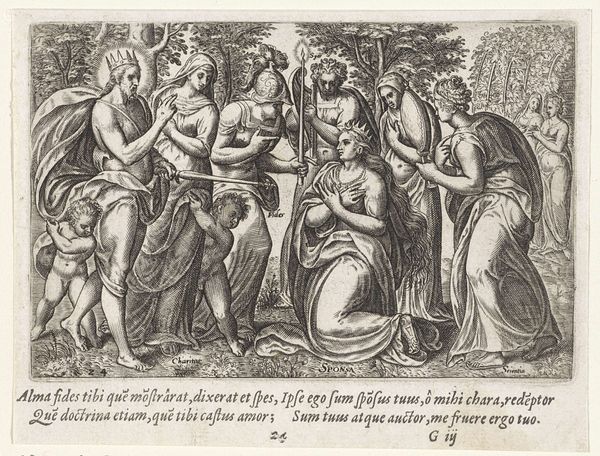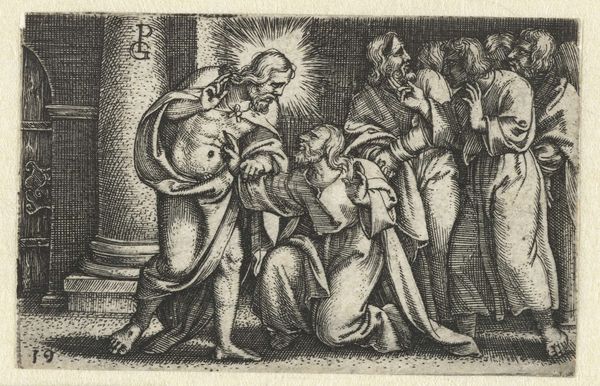
print, engraving
#
comic strip sketch
#
narrative-art
# print
#
pen illustration
#
pen sketch
#
mannerism
#
figuration
#
11_renaissance
#
personal sketchbook
#
sketchwork
#
pen-ink sketch
#
line
#
pen work
#
sketchbook drawing
#
history-painting
#
storyboard and sketchbook work
#
sketchbook art
#
engraving
Dimensions: height 91 mm, width 140 mm
Copyright: Rijks Museum: Open Domain
This engraving by Wierix, titled "Bride and Groom Embracing," presents a complex allegory of marriage made in the Netherlands around the turn of the 17th century. It's a period when the Dutch Republic was solidifying its independence and defining its cultural values. The image uses classical imagery and Latin inscriptions to elevate the concept of marriage. The central embrace is framed by figures representing virtues, muses, and even putti, suggesting that marriage is not merely a social contract but a divinely sanctioned union, a cornerstone of social order. The very act of creating a detailed print like this speaks to the growing merchant class and their desire for refined, moralizing imagery. To truly understand this image, we might look at marriage manuals and emblem books popular at the time. These sources would reveal the expectations and anxieties surrounding marriage in a society undergoing rapid change. In this way the historian can place the work within the framework of social and institutional context.
Comments
No comments
Be the first to comment and join the conversation on the ultimate creative platform.
